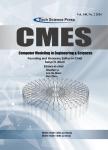A Lightweight Network with Dual Encoder and Cross Feature Fusion for Cement Pavement Crack Detection
作者机构:School of Computer Science and TechnologyChongqing University of Posts and TelecommunicationsChongqing400065China School of Software EngineeringChongqing University of Posts and TelecommunicationsChongqing400065China
出 版 物:《Computer Modeling in Engineering & Sciences》 (工程与科学中的计算机建模(英文))
年 卷 期:2024年第140卷第7期
页 面:255-273页
核心收录:
学科分类:08[工学] 0805[工学-材料科学与工程(可授工学、理学学位)] 0701[理学-数学]
基 金:supported by the National Natural Science Foundation of China(No.62176034) the Science and Technology Research Program of Chongqing Municipal Education Commission(No.KJZD-M202300604) the Natural Science Foundation of Chongqing(Nos.cstc2021jcyj-msxmX0518,2023NSCQ-MSX1781).
主 题:Shallow feature extraction module large kernel atrous convolution dual encoder lightweight network crack detection
摘 要:Automatic crack detection of cement pavement chiefly benefits from the rapid development of deep learning,with convolutional neural networks(CNN)playing an important role in this field.However,as the performance of crack detection in cement pavement improves,the depth and width of the network structure are significantly increased,which necessitates more computing power and storage space.This limitation hampers the practical implementation of crack detection models on various platforms,particularly portable devices like small mobile devices.To solve these problems,we propose a dual-encoder-based network architecture that focuses on extracting more comprehensive fracture feature information and combines cross-fusion modules and coordinated attention mechanisms formore efficient feature fusion.Firstly,we use small channel convolution to construct shallow feature extractionmodule(SFEM)to extract low-level feature information of cracks in cement pavement images,in order to obtainmore information about cracks in the shallowfeatures of images.In addition,we construct large kernel atrous convolution(LKAC)to enhance crack information,which incorporates coordination attention mechanism for non-crack information filtering,and large kernel atrous convolution with different cores,using different receptive fields to extract more detailed edge and context information.Finally,the three-stage feature map outputs from the shallow feature extraction module is cross-fused with the two-stage feature map outputs from the large kernel atrous convolution module,and the shallow feature and detailed edge feature are fully fused to obtain the final crack prediction map.We evaluate our method on three public crack datasets:DeepCrack,CFD,and Crack500.Experimental results on theDeepCrack dataset demonstrate the effectiveness of our proposed method compared to state-of-the-art crack detection methods,which achieves Precision(P)87.2%,Recall(R)87.7%,and F-score(F1)87.4%.Thanks to our lightweight crack detectionmodel,the parameter count of the model in real-world detection scenarios has been significantly reduced to less than 2M.This advancement also facilitates technical support for portable scene detection.



